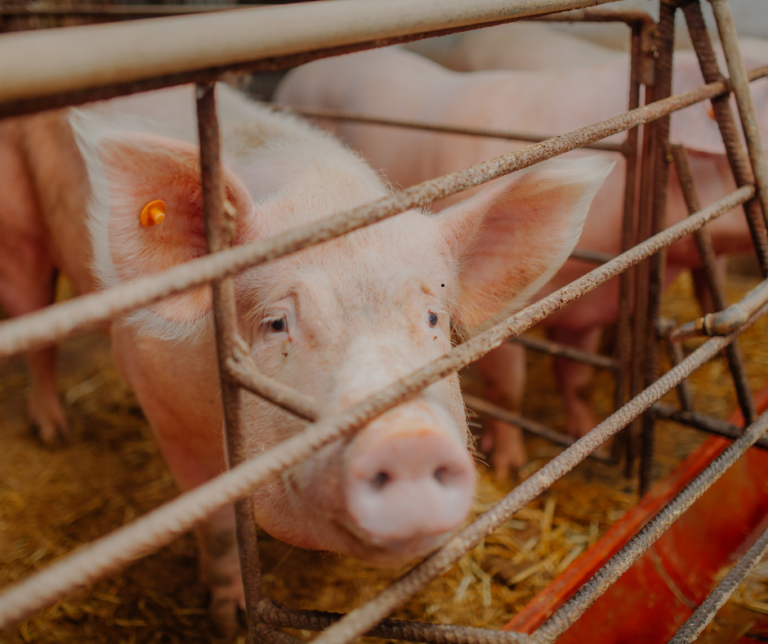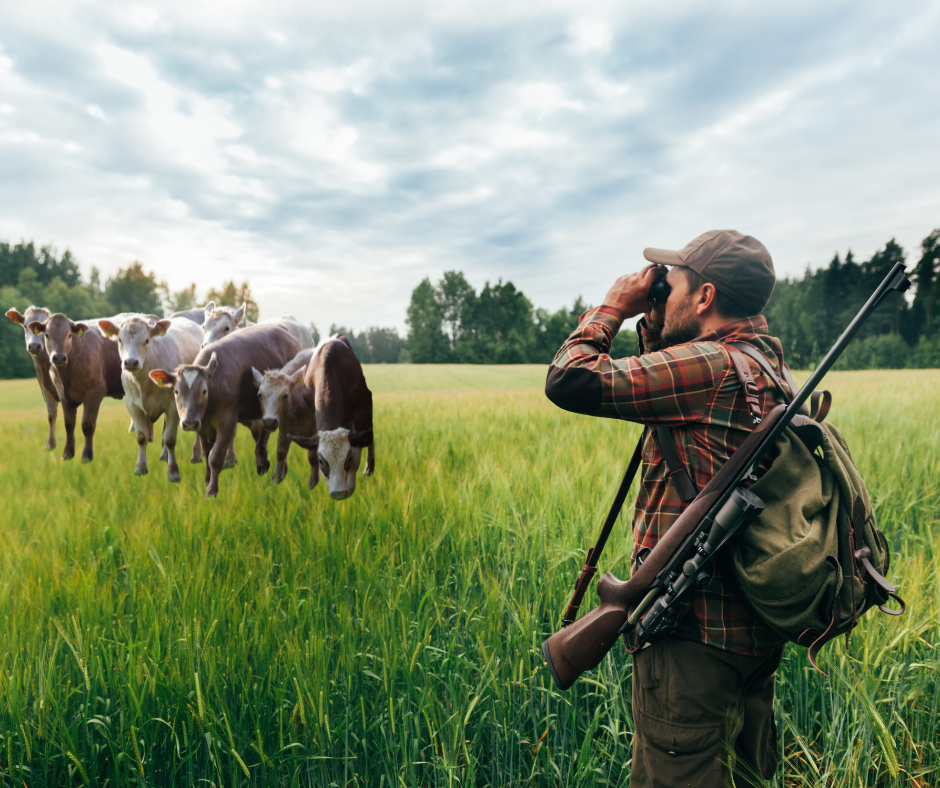From Field to Farm: Exploring the Contrasts Between Hunting and Livestock Farming
Hunting and farming livestock represent two distinct approaches to procuring animal resources for human consumption. As both a hunter and a farmer, I frequently contemplate which activity has the most significant impact on my environment. While both methods serve the purpose of providing sustenance, they differ significantly in their practices, impacts, and implications. In this article, we’ll compare hunting and farming livestock, shedding light on their respective methodologies, environmental effects, ethical considerations, and more.
Purpose and Methodology:
Hunting involves the pursuit and harvesting of wild animals from their natural habitats, typically using firearms, bows, or other hunting tools. In contrast, farming livestock entails the domestication and controlled breeding of animals within designated agricultural settings, such as farms and ranches. Both hunting and farming serve the purpose of procuring high-quality meat for you and your family.
Environmental Impact:
Hunting and farming livestock have distinct environmental footprints. While hunting can contribute to wildlife conservation by managing animal populations and ecosystems, it also poses risks such as habitat disruption and species depletion if not regulated properly. Farming livestock, on the other hand, can lead to issues like deforestation, water pollution, and greenhouse gas emissions associated with feed production and waste management.


Animal Welfare:
The welfare of animals involved in hunting and farming livestock is a critical consideration. In hunting, animals may experience stress and pain during the pursuit and killing process, raising ethical concerns about humane treatment. Farming livestock also raises welfare issues related to confinement, handling practices, and genetic manipulation for productivity. Death is an inevitable aspect of life, whether it occurs through human intervention or not. In my view, the ethical boundary is crossed when animals are reduced to mere commodities for financial profit.


Economic Factors:
Hunting and farming livestock have distinct economic implications. Hunting may generate revenue through permits, tourism, and the sale of game meat, while also providing recreational and cultural value. The recreational aspect should not be underestimated here. Everything from camping to hiking, and the preservation of lakes and forests, is greatly influenced by the activity of hunting. Farming livestock involves investment in infrastructure, feed, labor, and veterinary care, with potential returns from meat, dairy, and other animal products. Hunting requires a much smaller investment. You could also attribute the world of BBQ and restaurants to both hunting and farming, although the influence of farming is far greater.
Nutritional Value:
The nutritional value of hunted and farmed livestock can vary based on factors such as diet, exercise, and processing methods. Game meat from hunted animals may offer lean protein and unique flavors, while farmed livestock products may provide consistency, variety, and accessibility in the market. While I’ve witnessed some remarkable improvements in the quality of livestock raised by local farmers, the practices like rotational grazing and others gaining popularity in farming, are not typically reflected in products found at your local supermarket.

Beef:
Calories: Approximately 160 kcal
Protein: Approximately 26 grams
Fat: Approximately 15 grams
Saturated Fat: Approximately 6 grams
Cholesterol: Approximately 80 milligrams
Iron: Approximately 2.7 milligrams
Vitamin B12: Approximately 2.1 micrograms
Zinc: Approximately 5.4 milligrams
Venison (Deer Meat):
Calories: Approximately 135 kcal
Protein: Approximately 30 grams
Fat: Approximately 3.2 grams
Saturated Fat: Approximately 1.5 grams
Cholesterol: Approximately 110 milligrams
Iron: Approximately 3.4 milligrams
Vitamin B12: Approximately 3.1 micrograms
Zinc: Approximately 4.4 milligrams
Please note that these values can vary depending on the specific cut of meat and how it is prepared. However, in general, venison tends to be lower in calories, fat, and cholesterol compared to beef, while providing similar or higher levels of protein, iron, vitamin B12, and zinc.
Regulatory Framework:
Both hunting and farming livestock are subject to regulatory frameworks aimed at ensuring sustainability, animal welfare, and public health. Hunting regulations typically govern seasons, bag limits, weapon types, and hunting zones to manage wildlife populations responsibly. Farming livestock is regulated for animal health, food safety, environmental protection, and ethical standards. in Canada, both hunting and farming are regulated and managed by government bodies. In the United States, USDA governs food, agriculture, natural resources, and related issues. Hunting is primarily regulated by state law.
Cultural and Social Context:
Hunting and farming livestock hold cultural significance in various societies, reflecting traditions, identities, and practices passed down through generations. Hunting may symbolize self-reliance, connection to nature, and communal bonding, while farming livestock embodies agricultural heritage, food production systems, and livelihoods.


Ecological Balance:
Both hunting and farming livestock play roles in ecological balance, albeit in different ways. Hunting can help regulate animal populations and control species that may threaten ecosystems or agricultural interests. Farming livestock contributes to food production, land management, and ecosystem services, but also requires careful stewardship to minimize negative impacts on biodiversity.
Health and Safety:
Health and safety considerations are paramount in both hunting and farming livestock. Hunting entails risks of firearm accidents, exposure to wildlife diseases, and physical injuries in outdoor environments. Farming livestock poses hazards such as zoonotic diseases, handling injuries, and occupational health risks associated with intensive production systems.
Long-Term Sustainability:
Evaluating the long-term sustainability of hunting and farming livestock involves assessing their ecological, economic, and social dimensions. Sustainable hunting practices prioritize conservation, ethical hunting principles, and community engagement to ensure the viability of wildlife populations and habitats. Sustainable livestock farming focuses on resource efficiency, animal welfare, and environmental stewardship to meet current and future food demands without depleting natural resources or compromising welfare standards.
Hunting


Farming


In conclusion, hunting and farming livestock offer distinct pathways to meeting human dietary needs and cultural preferences. By examining their differences in purpose, methodology, environmental impact, and other dimensions, we gain insights into the complexities and trade-offs involved in both practices. Whether pursuing game in the wild or raising animals on farms, responsible stewardship and informed decision-making are essential for navigating the dynamic landscape of food production and conservation.




